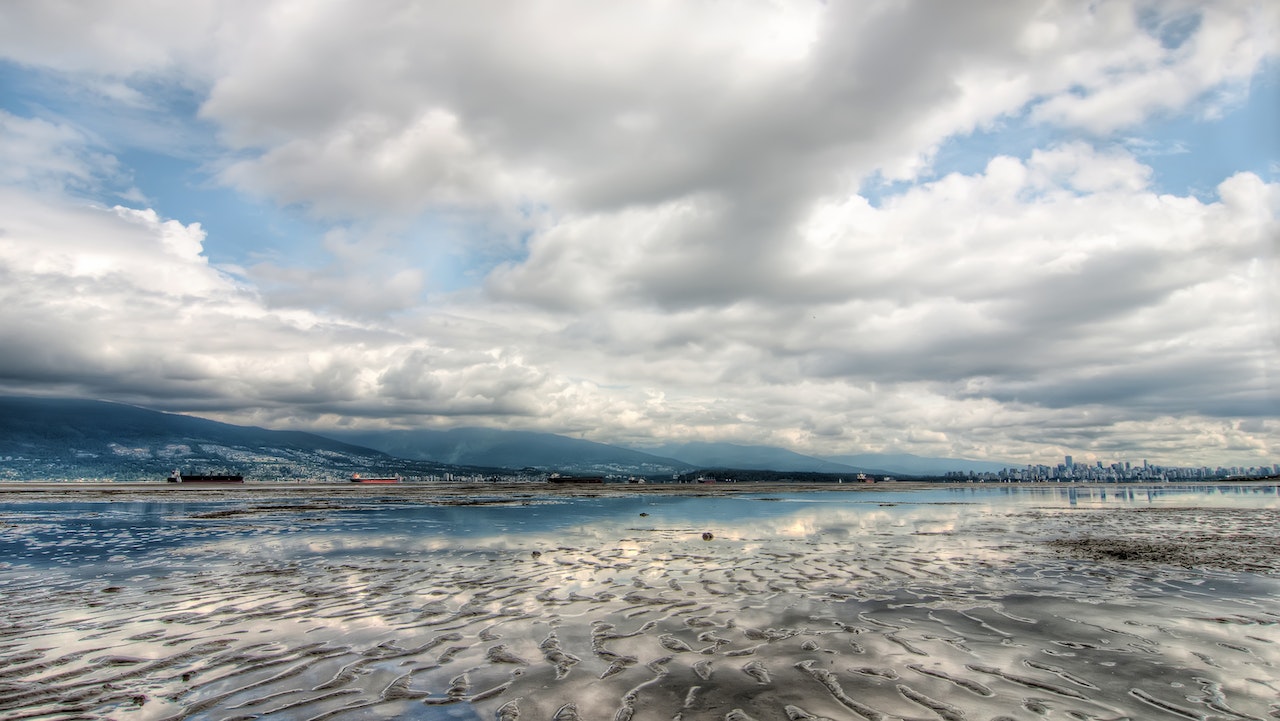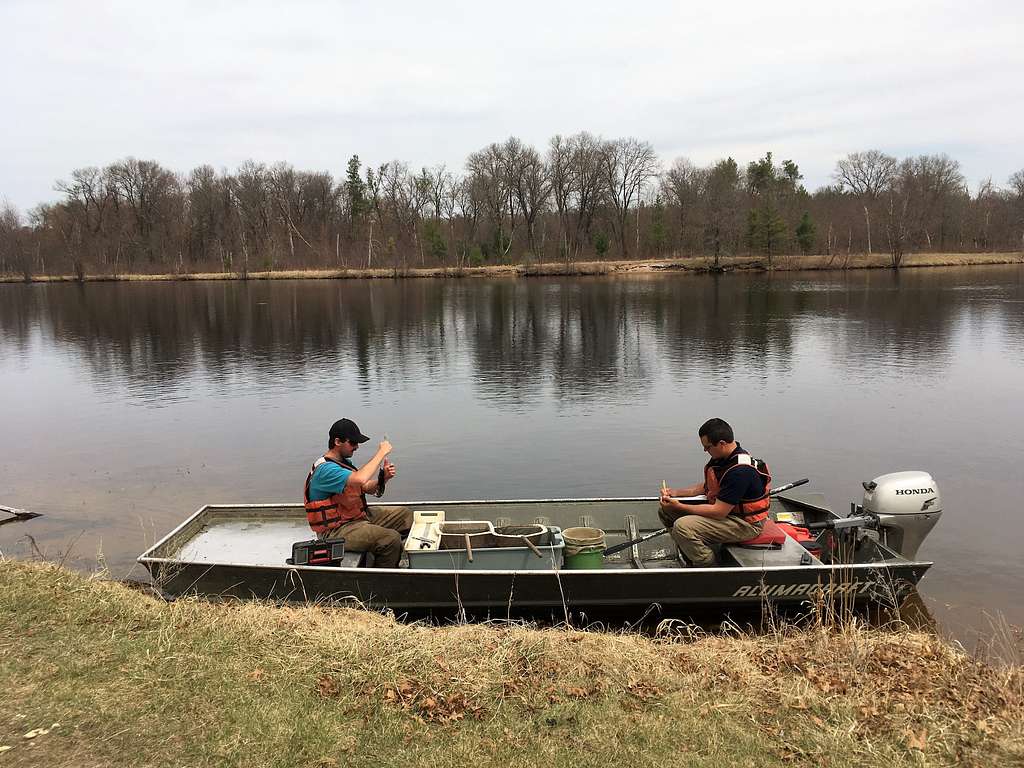Water towers, often overlooked but silently serving the needs of communities, are remarkable structures that play a pivotal role in ensuring reliable water supply. This article explores the intricacies of their functioning, from the purpose they serve to the components they comprise. So, How Do Water Towers Work ?
By delving into concepts such as gravity and water distribution, water pumps, and maintaining water pressure, we gain a comprehensive understanding of how these towering embodiments of efficiency contribute to our daily lives.
Through an analytical lens, we examine the design, construction, maintenance, and inspection processes of water towers while contemplating their future implications for sustainability and efficiency.
Key Takeaways
- Water towers provide reliable and consistent water supply to communities.
- Gravity-based systems utilize the height of water towers to create potential energy for water flow.
- Regular maintenance and inspection ensure the functionality and longevity of water towers.
- Adequate storage capacity in water towers ensures water availability during peak periods and emergencies.
The Purpose of Water Towers
The purpose of water towers is to provide a reliable and consistent supply of water to communities by utilizing gravity to maintain pressure in the distribution system.
Water tower maintenance plays a crucial role in ensuring the reliability of these structures. Regular inspection and upkeep are necessary to identify and address any potential issues that may compromise their functionality.
This includes checking for structural integrity, corrosion, leaks, and proper functioning of valves and pumps. Additionally, routine cleaning is essential to prevent sediment accumulation that could affect water quality or flow rates.
Components of a Water Tower
One important component of a water tower is the tank, which stores large quantities of water. The tank is typically made of steel or concrete and is designed to withstand the weight and pressure exerted by the stored water.
Water towers are constructed with careful consideration given to their structural integrity and longevity. The materials used in construction must be durable and resistant to corrosion, as exposure to external elements can compromise the tower’s stability.
Regular maintenance is essential for ensuring that the tank remains in good condition. This includes inspections for cracks or leaks, cleaning and disinfection of the interior, and repairs if necessary.
Additionally, proper maintenance extends the lifespan of a water tower, allowing it to continue providing a reliable source of potable water for communities.
Gravity and Water Distribution
Gravity plays a crucial role in the distribution of water from a water tower to the surrounding community. A gravity-based water system relies on the force of gravity to move water from higher elevations, such as a water tower, to lower elevations where it is needed.
This system works by utilizing the principle that water seeks its own level and will flow downhill due to gravitational pull. The height of the water tower creates potential energy that drives the flow of water through pipes and into homes and businesses.
To ensure proper functioning of this system, regular maintenance of the water tower is essential. Maintenance tasks may include inspecting for leaks or cracks, checking valves and pumps for optimal performance, monitoring pressure levels, and conducting routine cleaning and disinfection procedures.
Regular maintenance helps guarantee an uninterrupted supply of clean and safe drinking water to serve the community’s needs effectively.
The Function of Water Pumps
Water pumps play a crucial role in facilitating the movement of water from a higher elevation, such as a water tower, to lower elevations where it is needed in a gravity-based water distribution system. These pumps are responsible for maintaining the flow and pressure of the water throughout the entire distribution network.
Ensuring regular maintenance of water pumps is essential to ensure their efficient operation. Maintenance activities may include inspecting and cleaning the pump impellers, checking for any leaks or damages in the piping system, and lubricating moving parts to reduce friction and improve overall performance. Regular maintenance not only improves the lifespan of the pumps but also enhances their efficiency, resulting in reduced energy consumption and costs.
By properly maintaining water pumps, operators can help maintain consistent water pressure throughout the distribution system.
Transitioning into ‘maintaining water pressure’:
To maintain an optimal level of water pressure within a gravity-based distribution system…
Maintaining Water Pressure
To maintain an optimal level of water pressure within a gravity-based distribution system, it is important to regularly monitor and adjust the functioning of water pumps. Proper maintenance of water pumps ensures consistent and reliable water supply to consumers.
Maintaining water pressure involves various tasks such as checking for leaks or blockages in the pump system, inspecting valves and fittings for any signs of wear or damage, and monitoring the overall performance of the pumps. Regular maintenance also includes cleaning and lubricating moving parts, replacing worn-out components, and calibrating pressure gauges.
Water tower maintenance plays a crucial role in maintaining water pressure as well. This involves regular inspection of storage tanks, ensuring proper sealing to prevent contamination, and periodically cleaning them to remove sediment buildup.
The Role of Storage Capacity
The topic of water storage is crucial in ensuring the availability and accessibility of water for various purposes. Adequate storage capacity is essential to meet the demand during peak periods and emergencies, as it allows for continuous supply even when there are disruptions in water sources or distribution systems.
Additionally, managing water distribution efficiently plays a vital role in meeting the needs of different sectors and avoiding wastage, ensuring that water resources are utilized optimally.
Importance of Water Storage
One of the significant advantages of water storage is its ability to provide a reliable and constant supply of water during periods of high demand or emergencies. Water scarcity solutions and water management strategies often include the implementation of efficient storage systems to ensure adequate water availability.
Here are four key reasons why water storage is important:
- Meeting peak demand: Water towers and reservoirs store excess water during low-demand periods, which can be released during times of high demand, such as in urban areas or during droughts.
- Emergency preparedness: In case of natural disasters or infrastructure failures, stored water can serve as a critical resource for communities, ensuring access to clean drinking water even when the regular supply is disrupted.
- Improved system efficiency: By storing excess water during off-peak times, utilities can optimize their operations, reducing energy costs associated with pumping and treatment processes.
- Balancing seasonal variations: Storage facilities help manage fluctuations in supply caused by seasonal changes in rainfall patterns, maintaining a consistent supply throughout the year.
Overall, effective water storage plays a crucial role in ensuring a reliable and resilient water supply system for communities while addressing challenges related to water scarcity and managing demand efficiently.
Ensuring Water Availability
Ensuring water availability requires the implementation of effective strategies, such as efficient storage systems and management practices, to maintain a consistent and reliable supply for communities. One key aspect of these strategies is water tower maintenance. Water towers are essential components of many water supply systems as they provide storage capacity and help regulate water pressure. Regular maintenance is crucial to ensure the longevity and sustainability of these structures.
Maintenance tasks for water towers include inspections, cleaning, repairs, and painting. Inspections involve checking for structural integrity, leaks, corrosion, and other potential issues that may affect the tower’s functionality. Cleaning involves removing sediment buildup that can impact water quality. Repairs address any damages or malfunctions identified during inspections. Painting helps protect the tower from corrosion and extends its lifespan.
By implementing proper maintenance practices, communities can ensure the reliability and sustainability of their water towers, ultimately providing a continuous supply of clean water to their residents.
| Maintenance Tasks | Frequency |
|---|---|
| Inspections | Annually |
| Cleaning | Biannually |
| Repairs | As needed |
| Painting | Every 7-10 years |
Table: Recommended frequencies for different water tower maintenance tasks.
Managing Water Distribution
Managing water distribution involves implementing effective strategies to ensure the equitable supply of clean and reliable water to communities. This is particularly challenging in regions facing water scarcity, where demand exceeds available resources. To address these challenges, water distribution management must consider various factors:
1) Infrastructure development: Building and maintaining a robust network of pipelines, pumps, and storage facilities is crucial for efficient water distribution.
2) Demand management: Implementing measures like metering, leak detection, and public awareness campaigns can help reduce wastage and encourage responsible water use.
3) Water loss reduction: Identifying and addressing leaks, unauthorized connections, and inefficient practices can minimize losses within the distribution system.
4) Integrated planning: Coordinating with other stakeholders such as municipalities, industries, and agriculture sectors is essential to ensure optimal allocation of available water resources.
By effectively managing these aspects of water distribution, communities can overcome the challenges posed by limited resources.
Transitioning into the subsequent section on ‘water tower design and construction,’ it becomes evident that these structures play a vital role in ensuring consistent access to clean water by storing surplus supplies during periods of high availability for use during peak demand or emergencies.
Water Tower Design and Construction
The design and construction of water towers is crucial to ensuring their structural stability and strength. These structures are designed to withstand various environmental factors, such as wind loads and seismic forces, in order to prevent any potential failure or collapse.
Additionally, the water storage capacity of a tower is an important consideration that must be carefully determined based on the demand and usage patterns of the surrounding area.
Lastly, regular maintenance and inspection play a vital role in identifying any potential issues or defects that may affect the overall integrity and functionality of the water tower.
Structural Stability and Strength
Structural stability and strength are key considerations in the design and construction of water towers. These structures need to be able to withstand various forces, such as wind loads and seismic activity, while supporting the weight of the water they hold. The following factors contribute to ensuring their structural integrity:
1) Structural Design: Water towers are usually designed using a combination of steel or reinforced concrete materials. The design takes into account factors like tower height, diameter, and shape to optimize load distribution.
2) Load Bearing Capacity: Engineers calculate the maximum load that a water tower can safely support. This includes both dead loads (the weight of the structure itself) and live loads (the weight of the water). Safety factors are incorporated to ensure that the tower can withstand unexpected stresses.
3) Foundation Design: Adequate foundation design is essential for distributing the load from the tower into the ground. Factors such as soil type, bearing capacity, and settlement potential are considered during this process.
4) Material Selection: High-quality materials with properties that meet specific requirements for strength, durability, and resistance to corrosion are chosen for construction.
With a solid understanding of these structural considerations, we can now explore how water towers efficiently store large volumes of water.
Water Storage Capacity
To efficiently store large volumes of water, engineers must carefully consider the water storage capacity of water towers. Water towers play a crucial role in ensuring a reliable supply of clean water to communities by storing and distributing water during periods of high demand or when the regular supply is interrupted.
Water scarcity is a pressing global issue that necessitates effective water management strategies. The storage capacity of a water tower depends on various factors such as the size and height of the tower, as well as the available land area for construction. Engineers employ mathematical calculations and modeling techniques to determine the optimal storage capacity based on projected demand, population growth, and future expansion plans.
Maintenance and Inspection
Maintenance and inspection of water towers is essential to ensure their structural integrity, prevent potential damages, and guarantee the continuous supply of clean water to communities. Effective maintenance procedures and inspection protocols are crucial in maintaining the functionality and safety of these structures. Here are four key aspects that should be considered:
- Regular visual inspections: This involves visually inspecting the tower for any signs of corrosion, leaks, or damage.
- Structural integrity assessment: Periodic assessments should be conducted to evaluate the overall structural condition of the tower, including its foundation, support structure, and connections.
- Cleaning and disinfection: Water towers need to be cleaned regularly to remove sediment buildup and prevent bacterial growth.
- Maintenance record keeping: Detailed records of all maintenance activities should be maintained, including inspection dates, repairs made, and any necessary follow-up actions.
Water Tower Maintenance and Inspections
Inspection and maintenance of water towers are crucial to ensure their proper functioning and longevity. Water tower safety regulations must be strictly adhered to in order to prevent accidents and ensure public safety. Regular inspections should be conducted by qualified professionals who can identify any structural or mechanical issues that may arise over time. Additionally, water tower painting techniques play a vital role in maintaining the integrity of the structure. The paint acts as a protective barrier against corrosion and deterioration caused by weather conditions. It is important for the paint to be applied correctly, with multiple layers for maximum durability. Furthermore, using high-quality paint products that are specifically designed for water towers can further enhance their lifespan. By following these maintenance practices, water towers can continue to serve communities efficiently and sustainably.
| Safety Regulations | Painting Techniques |
|---|---|
| – Frequent inspections by professionals | – Proper surface preparation before painting |
| – Compliance with local building codes | – Multiple layers of paint for durability |
| – Adequate fencing around the tower | – Use of high-quality paint products |
| – Regular testing of safety features | – Application of paint according to manufacturer guidelines |
This focus on maintenance ensures that water towers remain safe, functional, and sustainable throughout their lifespan.
Water Tower Efficiency and Sustainability
This discussion will focus on the key points of energy consumption reduction, renewable energy integration, and water conservation methods in the context of water tower efficiency and sustainability.
Energy consumption reduction strategies aim to minimize the use of electricity or fuel in operating water towers. This can be achieved through various means such as optimizing pump efficiency, reducing leakage and wastage, implementing smart control systems, and using energy-efficient equipment. By reducing energy consumption, water towers can contribute to overall energy conservation efforts and help reduce greenhouse gas emissions.
Renewable energy integration involves incorporating sustainable sources such as solar or wind power into the operation of water towers. This can be done by installing solar panels or wind turbines on the tower structure or nearby areas. The generated renewable energy can be used to power the pumps, lighting, and other electrical systems of the water tower, reducing reliance on conventional energy sources and promoting clean energy production.
Water conservation methods play a crucial role in ensuring efficient and sustainable use of water resources within water towers. This includes measures such as implementing leak detection and repair programs, installing water-efficient fixtures and equipment, promoting water-saving practices, and adopting water management strategies. By conserving water, water towers can help preserve precious water resources and mitigate the impacts of droughts or water scarcity.
Energy Consumption Reduction
One potential strategy for reducing energy consumption in water towers is the implementation of more efficient pumping systems. This can be achieved through various energy-efficient solutions and smart grid integration.
Here are some specific ways to achieve energy reduction in water towers:
- Variable Frequency Drives (VFDs): VFDs allow pumps to operate at optimal speeds, adjusting their output according to the demand. This helps save energy by avoiding unnecessary high-speed operation.
- Energy Recovery Systems: By capturing and reusing excess pressure or hydraulic energy, these systems minimize the amount of electricity needed for pumping.
- Automated Control Systems: Using sensors and real-time data analysis, these systems optimize pump operations based on demand fluctuations, enabling energy savings.
- Renewable Energy Integration: By incorporating renewable sources like solar or wind power into the water tower’s energy supply, reliance on traditional electricity grids can be reduced.
Implementing these strategies will not only contribute to a more sustainable and efficient water supply infrastructure but also align with the goal of serving others by conserving resources for future generations.
In order to further explore renewable energy integration within water towers, let us transition into the subsequent section.
Renewable Energy Integration
Renewable energy integration in water tower systems involves the incorporation of sustainable power sources such as solar or wind energy to supplement or replace traditional electricity grids. This approach aims to reduce dependency on fossil fuels and decrease greenhouse gas emissions associated with conventional power generation.
The integration of renewable energy into water towers requires the installation of photovoltaic panels or wind turbines, which then convert sunlight or wind into electrical energy. This generated electricity can be used directly to power various components of the water tower system, including pumps, valves, and control systems. Moreover, excess renewable energy can be stored in batteries for later use during periods of low sun or wind availability.
Future advancements in renewable energy integration may involve the use of advanced storage technologies like hydrogen fuel cells or compressed air systems to enhance efficiency and reliability.
Transitioning from traditional grid-dependent systems to renewable energy-integrated water towers not only contributes towards a more environmentally sustainable future but also enables improved service provision and reduced operational costs for serving communities.
In the subsequent section about ‘water conservation methods’, we will explore techniques aimed at reducing water loss and optimizing its usage within the context of water towers.
Water Conservation Methods
Water conservation methods within the context of water tower systems involve implementing strategies to minimize water loss and optimize water usage, thereby ensuring efficient operation and sustainability. These methods include:
- Water recycling: This involves treating and reusing wastewater for non-potable purposes such as irrigation or industrial processes. By recycling water, the demand for freshwater supply is reduced, leading to less strain on natural resources.
- Rainwater harvesting: This method involves capturing rainwater from roofs or other surfaces and storing it for later use. Rainwater can be used for various applications like toilet flushing, laundry, or even drinking after proper treatment. Harvesting rainwater helps in reducing reliance on municipal water sources.
- Leak detection and repair: Regular monitoring of the water distribution system helps identify leaks or pipe failures promptly. Timely repairs prevent unnecessary water loss before it becomes a significant issue.
- Public awareness campaigns: Educating the public about the importance of conserving water encourages responsible usage habits among individuals and communities.
Implementing these conservation methods can contribute to sustainable management of water resources, ensuring their availability for future generations while serving the needs of society efficiently and effectively.
The Future of Water Towers
The future of water towers lies in the development and implementation of innovative technologies to enhance their efficiency and sustainability. With the increasing demand for fresh water and the need to conserve this precious resource, advancements in water tower technology are crucial. Future innovations aim to address challenges such as leakage, energy consumption, and maintenance costs. These improvements will not only optimize the functioning of water towers but also contribute towards sustainable development goals by reducing water waste and energy usage.
To understand the potential future innovations in water tower technology, let us consider the following table:
| Technological Advancements | Benefits |
|---|---|
| Smart sensors | Real-time monitoring of water levels, leak detection, and predictive maintenance. |
| Renewable energy sources | Utilization of solar or wind power for pumping operations, reducing reliance on fossil fuels. |
| Water treatment systems | Integration of advanced filtration techniques to improve water quality before distribution. |
These technological advancements have the potential to revolutionize how we use and manage our water resources through more efficient and sustainable methods. As these innovations continue to develop, our ability to provide clean drinking water to communities around the world will be greatly enhanced.
Frequently Asked Questions : How Do Water Towers Work ?
How Are Water Towers Filled With Water?
Water towers are filled with water through a process that involves maintenance and construction. The exact method varies depending on the specific tower, but typically involves pumping water from a nearby source into the tower’s storage tank.
Do Water Towers Provide Drinking Water Directly to Households?
Water towers do not directly provide drinking water to households. They function as storage facilities for water distribution systems, maintaining water pressure and ensuring a continuous supply of water during periods of high demand or emergencies.
How Do Water Towers Prevent Contamination of the Stored Water?
Water tower maintenance and construction are crucial to preventing contamination of stored water. Regular inspections, cleaning, and repairs ensure the integrity of the structure, while proper filtration systems and disinfection methods eliminate potential sources of contamination.
Can Water Towers Be Used for Purposes Other Than Supplying Water to Cities?
Water towers can serve purposes beyond supplying water to cities. They can be repurposed for various functions such as art installations, observation decks, or even communication infrastructure, adding aesthetic value to the surroundings.
Are Water Towers Still Necessary in Modern Cities With Advanced Water Distribution Systems?
The necessity of water towers in modern cities with advanced water distribution systems can be assessed by considering factors such as water tower maintenance and the impact of water tower aesthetics on the overall urban landscape.
Conclusion – How Do Water Towers Work ?
In conclusion, water towers stand tall as guardians of our precious resource. With their sturdy components and efficient design, they ensure the steady flow of water to our homes and businesses.
Like a conductor guiding an orchestra, gravity orchestrates the distribution of this life-giving liquid. The intricate dance between water pumps and pressure maintenance keeps the rhythm flowing smoothly.
Through meticulous inspection and maintenance, these structures remain stalwart in their duty. As we look towards the future, water towers continue to evolve, embracing efficiency and sustainability for generations to come.



